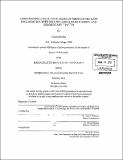| dc.contributor.advisor | Laura F. Robinson and Olivier Marchal. | en_US |
| dc.contributor.author | Burke, Andrea, Ph. D. Massachusetts Institute of Technology | en_US |
| dc.contributor.other | Woods Hole Oceanographic Institution. | en_US |
| dc.date.accessioned | 2012-05-15T21:11:35Z | |
| dc.date.available | 2012-05-15T21:11:35Z | |
| dc.date.copyright | 2012 | en_US |
| dc.date.issued | 2012 | en_US |
| dc.identifier.uri | http://hdl.handle.net/1721.1/70777 | |
| dc.description | Thesis (Ph. D.)--Joint Program in Oceanography/Applied Ocean Science and Engineering (Massachusetts Institute of Technology, Dept. of Earth, Atmospheric, and Planetary Sciences; and the Woods Hole Oceanographic Institution), 2012. | en_US |
| dc.description | Cataloged from PDF version of thesis. | en_US |
| dc.description | Includes bibliographical references. | en_US |
| dc.description.abstract | Radioactive isotopes can be used in paleoceanography both for dating samples and as tracers of ocean processes. Here I use radiocarbon and uranium series isotopes to investigate the ocean's role in climate change over the last deglaciation. I present a new method for rapid radiocarbon analyses as a means of age-screening deep-sea corals for further study. Based on age survey results, I selected forty corals from the Drake Passage and thirteen from the Reykjanes Ridge off Iceland and dated them with uranium series isotopes. The uranium series dates give independent ages that allow radiocarbon to be used as a tracer of circulation and carbon cycle changes. The radiocarbon records generated from the Drake Passage corals show increased stratification in the Southern Ocean during the last glacial maximum (LGM) that disappeared during the start of the deglaciation as atmospheric CO2 began to rise during Heinrich Stadial 1 (HI). Considering these data and using a simple mass budget calculation, I show that the drop in atmospheric radiocarbon activity during H1 can be explained given direct carbon exchange between the radiocarbon-depleted deep ocean and atmosphere, e.g. through the Southern Ocean. The Drake Passage radiocarbon records also show evidence for decreased air-sea gas exchange in the Southern Ocean during the Antarctic Cold Reversal/Belling-Allered coincident with the hiatus in the deglacial CO2 rise. During this time period in the North Atlantic, radiocarbon reconstructions from deep-sea corals collected from off Iceland show a similar ventilation rate to that observed today and during the Holocene. To further investigate changes in North Atlantic ventilation over the last deglaciation, I used an inverse model to assess the consistency of sedimentary 2m1 Pa/ 230Th ratios from the Holocene, Hl, and the LGM with the modern circulation. Although sedimentary 231Pa/230Th has been used to infer changes in the strength of the meridional overturning circulation in the past, I find that published data are consistent with the modern circulation during the LGM and Hi. These findings highlight the importance of giving due regard to the uncertainties in the behavior and spatial distribution of paleoceanographic tracers. | en_US |
| dc.description.statementofresponsibility | by Andrea Burke. | en_US |
| dc.format.extent | 149 p. | en_US |
| dc.language.iso | eng | en_US |
| dc.publisher | Massachusetts Institute of Technology | en_US |
| dc.rights | M.I.T. theses are protected by
copyright. They may be viewed from this source for any purpose, but
reproduction or distribution in any format is prohibited without written
permission. See provided URL for inquiries about permission. | en_US |
| dc.rights.uri | http://dspace.mit.edu/handle/1721.1/7582 | en_US |
| dc.subject | Joint Program in Oceanography/Applied Ocean Science and Engineering. | en_US |
| dc.subject | Earth, Atmospheric, and Planetary Sciences. | en_US |
| dc.subject | Woods Hole Oceanographic Institution. | en_US |
| dc.subject.lcsh | Paleoceanography | en_US |
| dc.subject.lcsh | Climatic changes | en_US |
| dc.title | Constraining circulation changes through the last deglaciation with deep-sea coral radiocarbon and sedimentary ²³¹Pa/²³⁰Th | en_US |
| dc.type | Thesis | en_US |
| dc.description.degree | Ph.D. | en_US |
| dc.contributor.department | Joint Program in Oceanography/Applied Ocean Science and Engineering | en_US |
| dc.contributor.department | Woods Hole Oceanographic Institution | en_US |
| dc.contributor.department | Massachusetts Institute of Technology. Department of Earth, Atmospheric, and Planetary Sciences | |
| dc.identifier.oclc | 790619302 | en_US |
